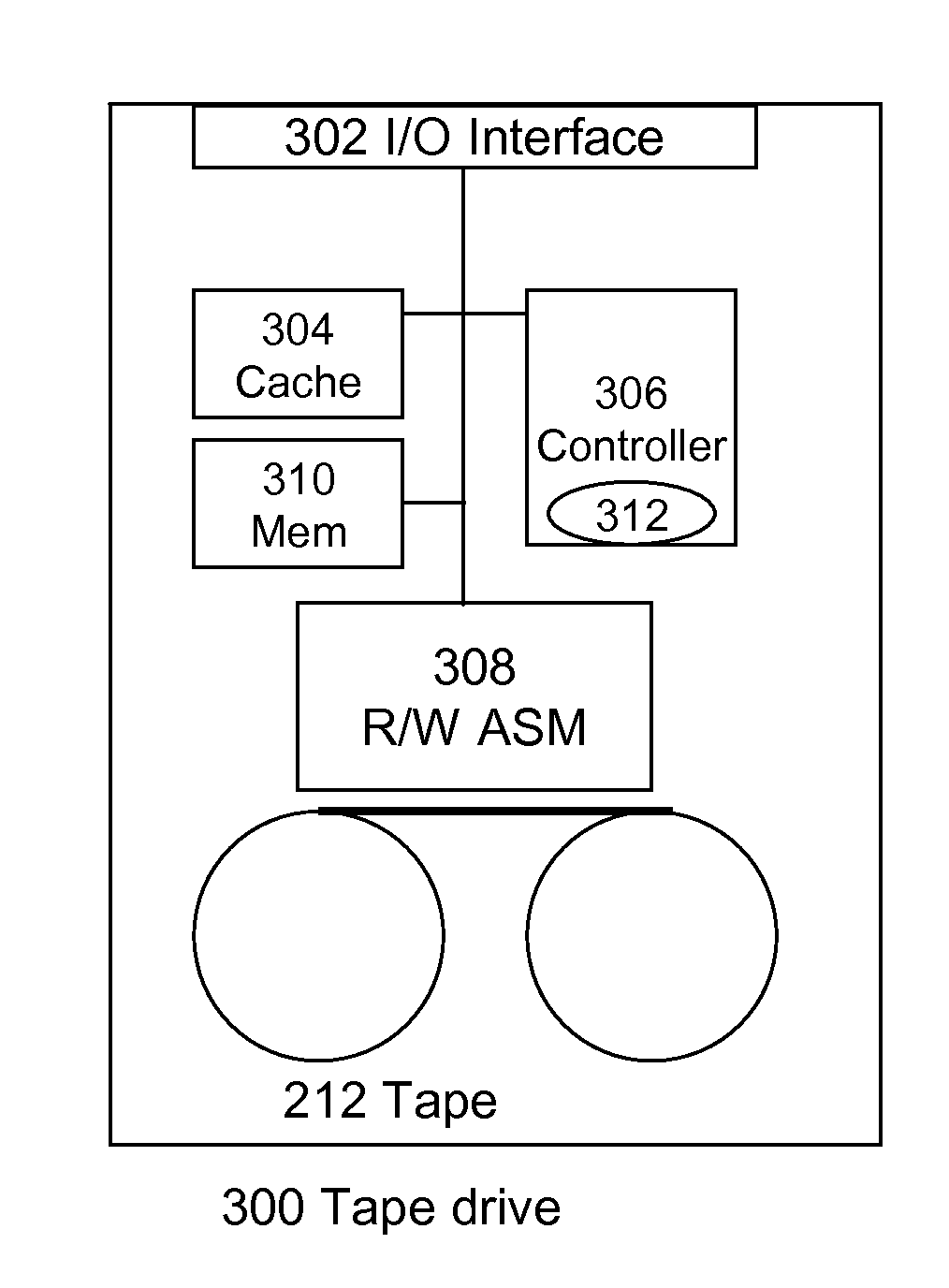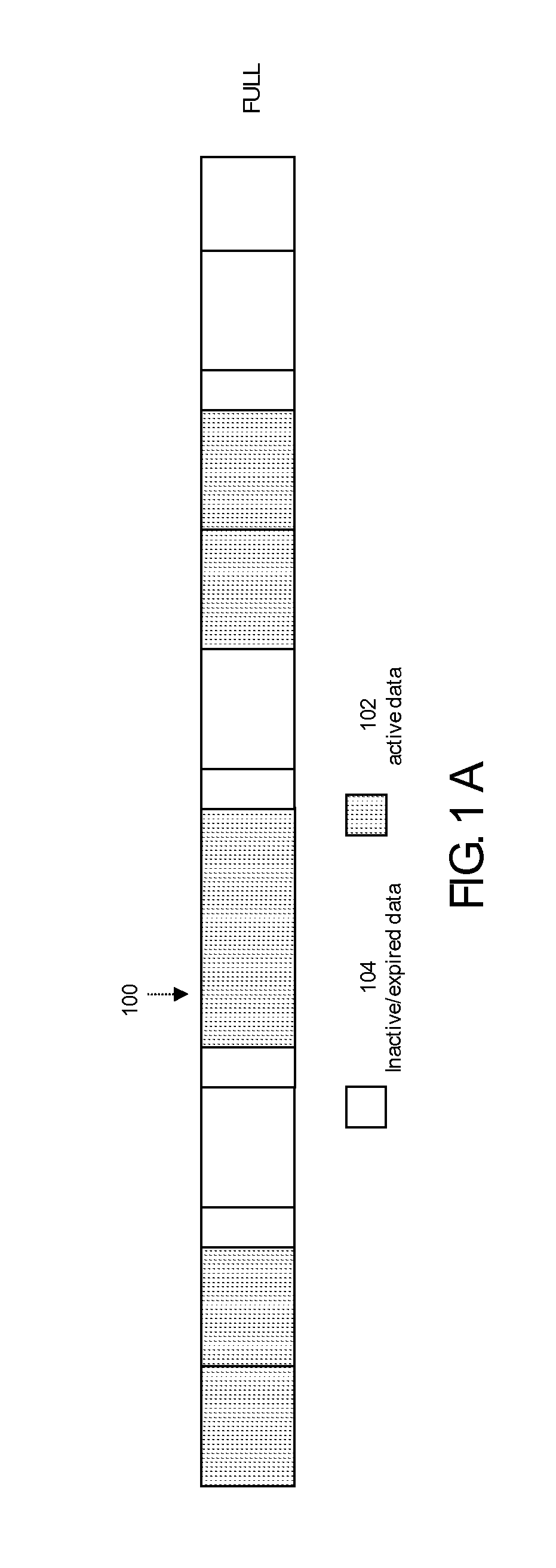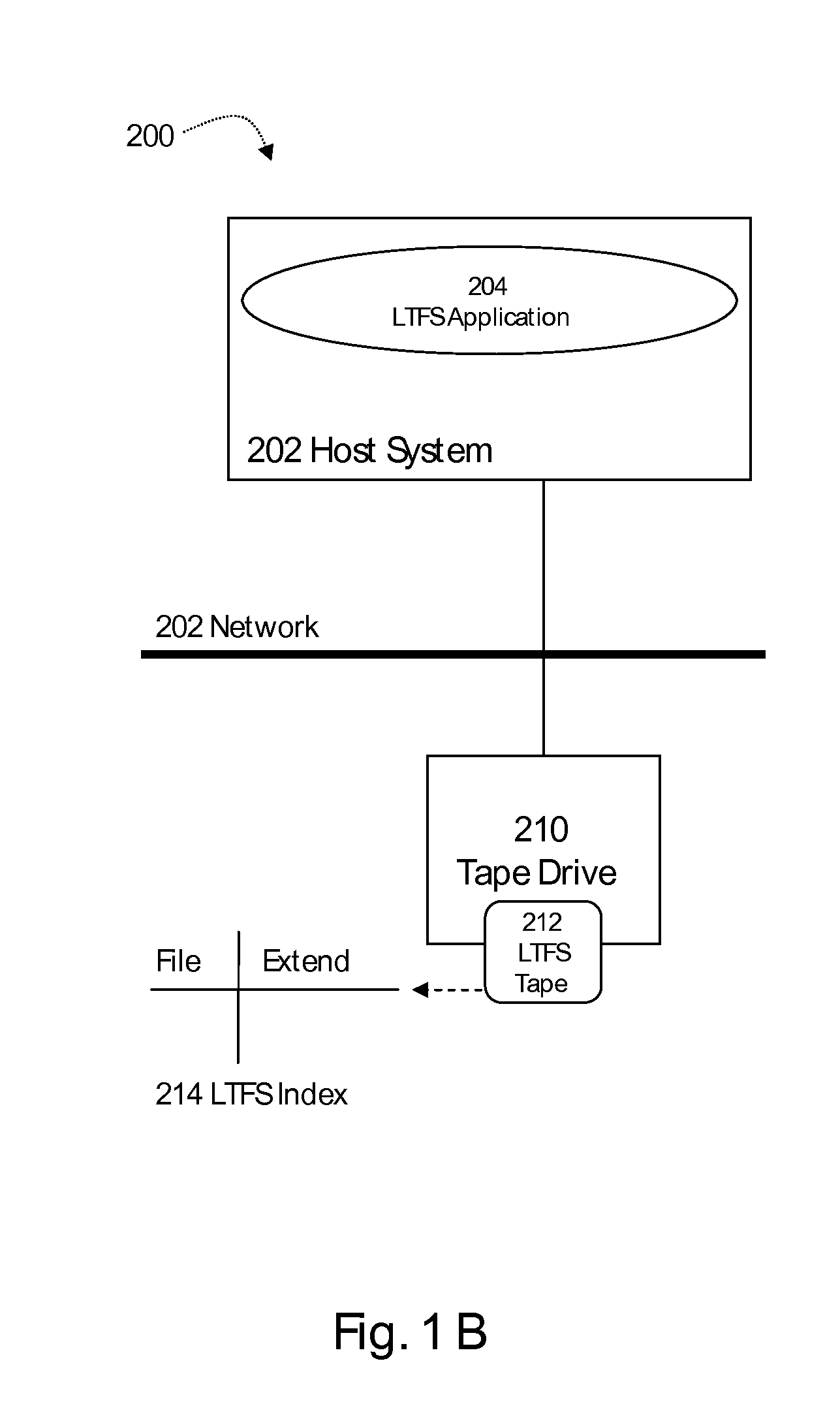Autonomic reclamation processing for tapes
a tape and autonomic technology, applied in the computer field, can solve the problems of data becoming inactive, data not being able to write to any position on the tape,
- Summary
- Abstract
- Description
- Claims
- Application Information
AI Technical Summary
Benefits of technology
Problems solved by technology
Method used
Image
Examples
Embodiment Construction
[0008]The present invention teaches a novel method and system for autonomic reclamation processing of tapes which comprises the steps of loading a formatted tape into tape drive, wherein said tape drive includes a memory for buffering active data during reclamation processing and a reclamation logic for consolidating all active data in capacity optimized manner on the same tape, wherein said formatted tape comprises metadata denoting active and inactive data blocks for files, receiving an instruction to perform reclamation processing on said formatted tape, reading said meta data of the formatted tape into the reclamation memory, using said meta data to determine the files which represent active data and the block addresses where these files are stored on said formatted tape and storing it in a table, sorting said table comprising in active files and block addresses by the block address in ascending order and determining a starting block address, reading all active files ordered in ...
PUM
 Login to View More
Login to View More Abstract
Description
Claims
Application Information
 Login to View More
Login to View More - R&D
- Intellectual Property
- Life Sciences
- Materials
- Tech Scout
- Unparalleled Data Quality
- Higher Quality Content
- 60% Fewer Hallucinations
Browse by: Latest US Patents, China's latest patents, Technical Efficacy Thesaurus, Application Domain, Technology Topic, Popular Technical Reports.
© 2025 PatSnap. All rights reserved.Legal|Privacy policy|Modern Slavery Act Transparency Statement|Sitemap|About US| Contact US: help@patsnap.com



